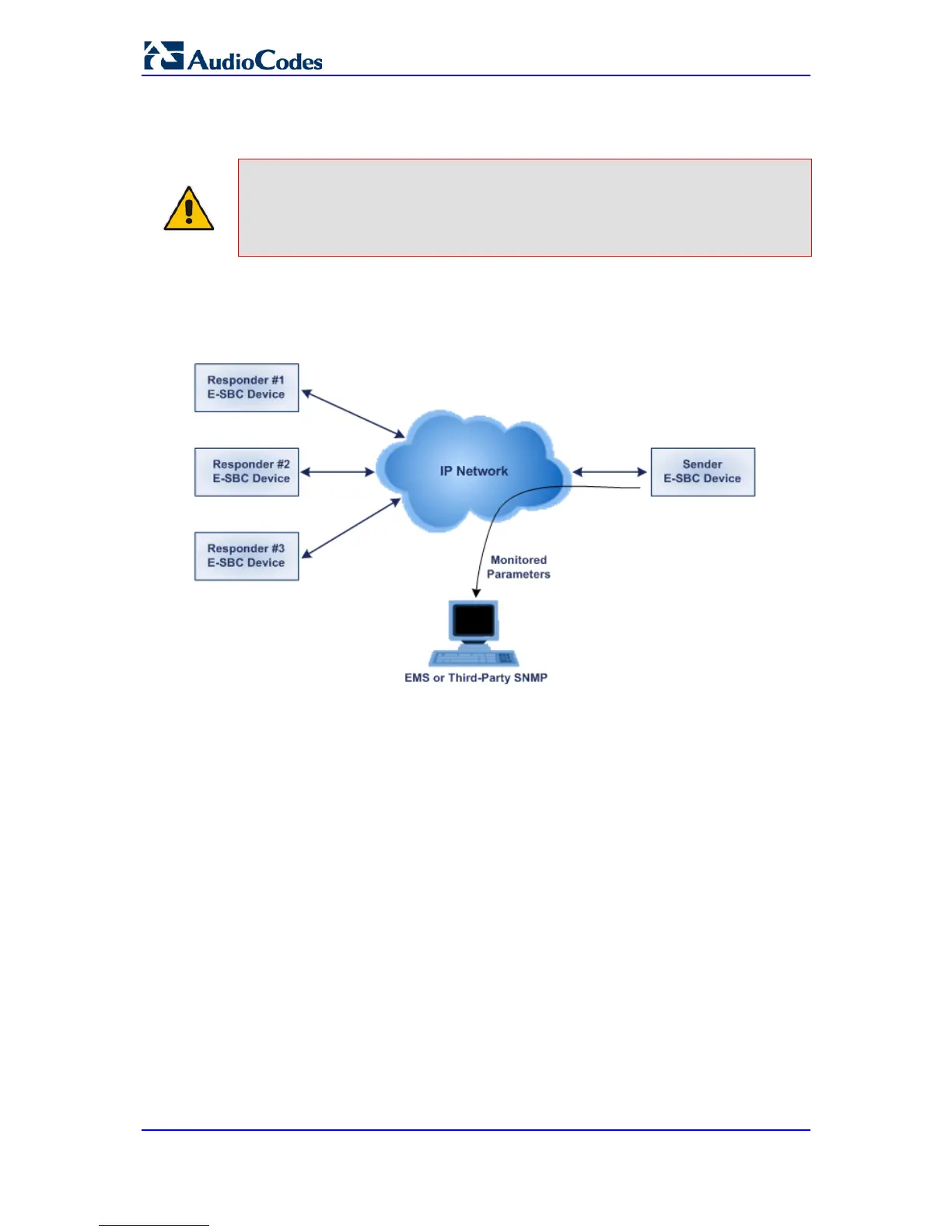that accurately predicts the WAN service-level agreement (SLA) granted for real VoIP calls
by the network.
Note: If the packets sent mimic a G.711 or G.729 stream, the following quality
measurements are also done:
• Listener quality MOS per ITU-T specification
• Conversation quality MOS per ITU-T specification
You can configure up to 10 network quality probing paths. For example, you can configure
three probing paths, where your device is configured as a sender for three different
responder devices, as shown in the figure below:
Figure 56-5: Network Quality Probing Example
You can periodically poll the device for the latest VoIP quality metrics and specify
thresholds for the quality metrics mentioned above. If these thresholds are crossed, the
device generates the following SNMP traps to Audiocodes EMS or third-party SNMP-based
manager:
NqmPacketLossAlarm: High packet loss detected toward probe destination
This feature is configured using the CLI. Below is a list of some of the CLI commands. For
a full list and description of the related CLI commands, refer to the MSBR Series CLI
Reference Guide for System and VoIP Functionalities.
nqm sender-table - adds a sender (including RTT, PL, and jitter thresholds; associates
probing definition; responder address; local interface)

